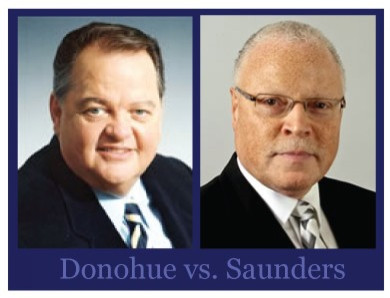Largest US Public Workers Union Set For New Leader
Analysis

The nation's largest public-sector employee union this week selects its first new leader in a generation, and its more than 3,500 delegates, representing about 1.4 million members, must decide which of two candidates is most likely to halt declining membership and shrinking benefits: the one focused on national politics or the one focused on localized activism.
There have been recent setbacks endured by the American Federation of State, County and Municipal Employees (AFSCME). Wisconsin voters rejected an AFSCME-led effort to recall Gov. Scott Walker after he stripped many state government workers of collective bargaining power. In addition, AFSCME members are facing taxpayer initiatives to trim pensions, efforts that have succeeded in San Jose, Calif., and Los Angeles.
On Thursday in Los Angeles, AFSCME members, many of whom have seen no other leadership of their union in their lifetimes, will elect either Lee Saunders, the union's current secretary-treasurer, or Danny Donohue, who represents the New York City Civil Service Employee Association, the largest AFSCME local.
It's a turning point for the union -- it's going to define their very existence, Harley Shaiken, a U.C. Berkeley professor who specializes in labor issues, told UPI. There are some very new challenges out there that are going to require a very innovative union that can move quickly and address challenges in new ways.
Gerald McEntee, 76, is stepping down as AFSCME's head, a position he has held for more than 30 years. The union he leads is one of the most politically active of the AFL-CIO federation; it spent $2.9 million on lobbying last year and $1.3 million on congressional campaign contributions in the 2012 election cycle, according to the Center for Responsive Politics. A lifetime stalwart supporter of the Democratic Party, McEntee was a 2008 Democratic Party super-delegate for Pennsylvania.
Saunders is more closely associated with recent setbacks than his opponent because of his position as a high ranking union official. But he is claiming credit for helping overturn Ohio's Senate Bill 5 last year, which would have banned strikes by public sector employees, cut bargaining rights and scrapped binding arbitration in management-labor disputes that have trended toward benefiting workers in the state. The victory in that case was sweetened because it came after the GOP surge in 2010 and because Gov. John Kasich, a Republican, pushed hard to get Democrats to support the bill. As it turned out many Republicans did not support Kasich.
Hey, I'm a Republican, but I'm telling you, Republican firefighters and police officers aren't going to be voting Republican around here for a while, Doug Stern, a 15-year firefighter, told Politico after the bill failed to pass. We'll see what happens in 2012, but our guys have a long memory. We're angry and disgusted.
Conservative PAC Citizens United spent $50 million trying to get Ohio voters to support the bill.
But Saunders' opponent Donohue isn't convinced that status quo is working. He says Saunders is out of touch with local concerns, and the checkbook unionism of McEntee -- and by extension Saunders, who has been a staffer of the union since 1978. He points to the $90 million AFSCME spent in 2010, mostly on national political objectives. Saunders says he would focus more on state and local issues because that is where the union could be most effective.
It's also where most union members work. According to the Bureau of Labor Statistics, the top two largest sectors with the highest number of union-represented workers are local and state government workers, at 43.2 percent and 31.5 percent, respectively.
The least represented workers? Employees in financial services and food and beverage service workers, at 1 percent and 1.2 percent, respectively.
© Copyright IBTimes 2024. All rights reserved.












